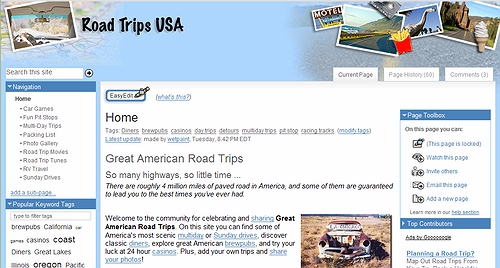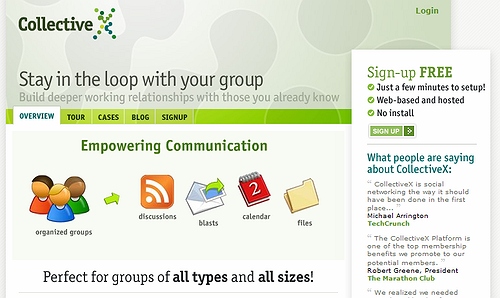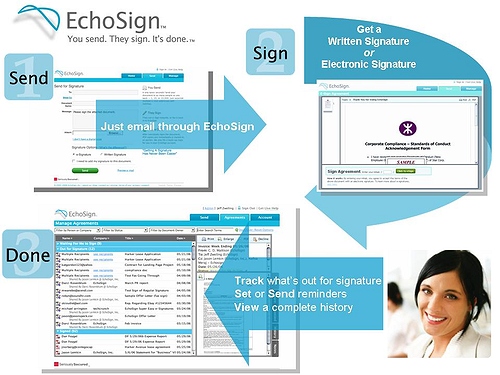IBDNetwork’s Under the Radar event at SAP Labs was a lively evening with full house, good discussion and four exciting companies. Prior to the presentations moderator Mike Arrington (TechCrunch) and the panel discussed pro’s and con’s of Office 2.0.
Part of the discussion was whether “Office 2.0” is just an attempt to replicate existing functions on the Web.
Peter Rip’s take was that such replication is pointless: the web-based apps cannot come close to the incumbent (MS Office) in functionality and they stand no chance to unseat it in the corporate world. The real promise of Office 2.0 in Peter’s view is creating processes-mashups, supporting business in entirely new ways.
Ismael Ghalimi’s response was that partial “replication” is OK, in reality the MS Office products are way too complex, 90% of users probably only use 10% of the functionality. The added value is the ease of collaboration, and also easier integration, as it would be demonstrated by Zoho in a few minutes. I tend to agree with Ismael, as I stated before.
The Panel: Peter Rip, Sam Schillace, Etay Gafni, and Ismael Ghalimi
(photo credit: Dan Farber, ZDNet)
After the initial discussion the four invited companies each had 5 minutes for a presentation/demo, followed by another 5 minutes of Q/A. Although the theme of the evening was Office 2.0, 2 out of 4 presenters were not strictly speaking “office” companies – the Web 2.0 moniker would better fit them: Wetpaint and Collectivex. They also have something in common: a strong focus on groups, communities – but they take rather different approaches with CollectiveX being rather structured, whereas Wetpaint is an open book that the users get to write.

Wetpaint was presented by Ben Elowitz, Founder and CEO. Technically Wetpaint is a wiki, but the best part is that one really does not have to know wikis, just happily type away and create attractive pages without the usual learning curve. More than that: these pages can be shared, other users can contribute, entire communities can grow and thrive.
It’s an ad-supported free web-based service that combines the best of wikis, blogs, and forum software.
- It’s like a wiki: you can create any number of pages, arrange them in a hierarchy, navigate through them top-down in a tree fashion, or via direct links between pages. Anyone can edit any page a’la wiki (optionally pages can be locked, too). There is version control, audit track of changes and previous releases can be restored at a single click.
- It’s like a discussion forum: you can have threaded/nested comments attached to each page
- It’s like a blog: editable area in the middle, sidebars on both sides with tags and other info. Personally I’d like to see more blog-like features, like pinging blog indices (Technorati and others), trackback support, etc. Ben confirmed some of these are on the way – when it happens, I believe Wetpaint will take off big time – after all, discoveribility is critical in building online communities.
All panelists were impressed with the simplicity and elegance of the UI, but someone (don’t remember if panel or audience) commented this is just one of many similar products available.
I beg to differ. Yes, in a room of 60-80 techies we can all use (?) any other wiki easily. Not so in “real life”. I’ve set up wikis for companies, ad-hoc workgroups and events for the general public – there’s a whole world of difference. In a company you have a common purpose, set objectives, can provide training – not so in the consumer/ community space. Take a look at the Wetpaint site we set up for the Techdirt Greenhouse (un)conference, or Road Trips USA (pic link above) on the fun side.
I challenge anyone to find another “wiki” with comparable features yet is so easy that anyone who can type and click (i.e. use a simple editor) will be able to contribute without any learning.
Update (8/18): Robert Scoble hits the nail on the head: it’s all about the Blink Test. Wetpaint passes it. Other wikis don’t.

Collectivex Founder and CEO Clarence Wooten described his service as LinkedIn meets Yahoo Groups. Mike Arrington’s definition (not as moderator, but earlier on TechCrunch): “CollectiveX is what LinkedIn should have been.” It’s social networking based on groups, rather than individuals, facilitating communication, providing file sharing, messaging, calendaring and exchange of leads/contacts. Revenue model: free base, subscription for a few premium features.
I admit I suffer from Social Network burnout. I do find some of them useful, especially LinkedIn, and I can think of a few groups I am a member of where we could use CollectiveX – I am simply tired of creating zillion version of my profile. I’d like a “Profile Central” where all these new services could pick up my data from. Am I dreaming? Wasn’t AlwaysOn/GoingOn supposed to somehow resolve the profile portability problem?
Of course this is just my ranting, although the audience questions pointed in the same direction, albeit indirectly: nice functionality, but isn’t incumbent LinkedIn too entrenched for new social networks to challenge its position?

Echosign Founder and CEO Jason Lemkin’s task was perhaps more difficult, perhaps easier: unlike the other three, his service could not be identified with a few words, he had to explain a new process flow. On the other hand he is addressing an ugly enough problem that he captured everyone’s attention: No matter how well computerized we are, when it comes to signing contracts, we’re back to the world of paper, faxes, lost documents. Echosign is a web-based service that takes care of the entire process flow( see slide below) : getting documents signed (electronically or hand-signature by fax), filed and distributed as pdf, routed, approved, managed, archived.
While technically this is SaaS, I guess Software Enabled Service is a better description than Software as a Service:-) EchoSign addresses a painful enough problem with a simple and elegant solution that it won the Panel’s Award. Congratulations to Jason and team!

Zoho Founder and CEO Sridhar Vembu did not bring us just one product but an entire productivity Suite. How do you demo 4 products in 5 minutes? (Not that he only has four, at my last count the company has 10 Zoho-branded products). The solution: you don’t. Instead of focusing on individual products, you demonstrate the power and ease of integration between them.
Sridhar pulled up a sample spreadsheet of sales figures and a chart; he changed some numbers in Zoho Sheet and of course the chart changed, too. Next with a few clicks he dropped data in a window and voila! – a Zoho Creator application just got created. We then saw the data entry form show up on a slide – part of Zoho Show. The same form, or other data views can also be embedded in Zoho Writer documents, or even in an email. As Sridhar kept on switching screens, one could almost get lost, but he got his point through: whichever application he changed the data in, it would show up real-time in the other application. I don’t have his presentation, but can present a similar scenario I used on my blog earlier. First I collected votes in a blog post using a Zoho Polls entry form –here are the results. Useful chart, not as impressive as the spreadsheet’s charting capability though, so I dropped the results in Zoho Sheet, which generated the pie chart below:
The chart has it’s own URL, it’s easy to embed in a blog (this post), document or presentation, and so does the entire spreadsheet itself.
Clearly the format of the Zoho presentation was a compromise, focusing on integration, but I think it paid off, the audience clearly got the picture that instead of randomly selected applications Zoho has a complete office/productivity Suite to offer. The tradeoff of course was not seeing detailed functionality – which is probably why panelist Peter Rip commented that the creation of these documents did not appear to be a collaborative process. As I have played with the Zoho Suite before, I know it is indeed very collaborative and the Zoho folks might want to call Peter and offer him a more detailed demo. The audience was very interested, in fact after the official event Zoho set up a demo station outside where they continued answering questions for a good half an hour or so. Some of those inquiries were about the ability to buy and implement the Suite behind a corporate firewall – something that Zoho is not ready for at this stage, but the interest level certainly bodes well for a future corporate business model. The immediate reward to Zoho came in the form of votes: Zoho won the Audience’s Choice for Best Product Award.
Congratulations to Sridhar and his team!
Last, but not least, thanks to IBDNetwork for organizing another successful event.
This was just the beginning: Office 2.0 enthusiast, or just about anybody interested, come join as at the Office 2.0 Conference in San Francisco, October 12-13.
Tags: Office+2.0, WebOffice, IBDNetwork, Under+the+Radar, TechCrunch, MS+Office, Microsoft+Office, Microsoft, Productivity+tools, Wetpaint, wiki, wikis, collaboration, online+communities, blogs, blogging, Techdirt+Greenhouse, CollectiveX, social+networking, LinkedIn, AlwaysOn, GoingOn, Echosign, digital+signature, document+management, SaaS, Zoho, Zoho+Suite, Zoho+Writer, Zoho+Sheet, Zoho+Show, Zoho+Creator, Zoho+Polls, Office+2.0+Conference, office2ocon








 Well, maybe you shouldn’t. Let me rephrase the original statement: Wikis have arrived when …you don’t even have to know what they are to use one. You don’t have to know you’re using a wiki, just happily type away, creating shareable content on the Web. This just became possible on Monday, with the launch of
Well, maybe you shouldn’t. Let me rephrase the original statement: Wikis have arrived when …you don’t even have to know what they are to use one. You don’t have to know you’re using a wiki, just happily type away, creating shareable content on the Web. This just became possible on Monday, with the launch of  I’m at the
I’m at the 

Recent Comments